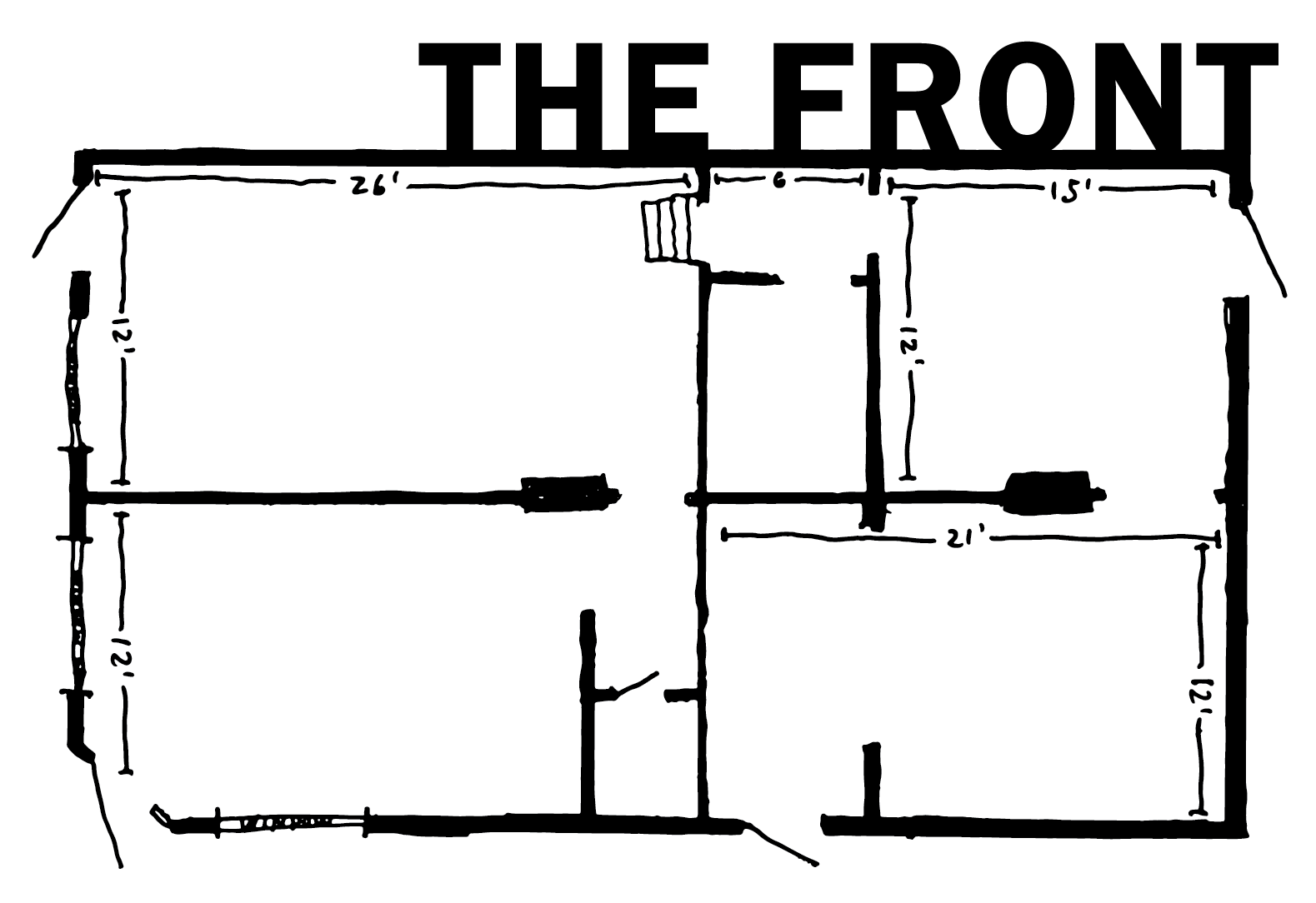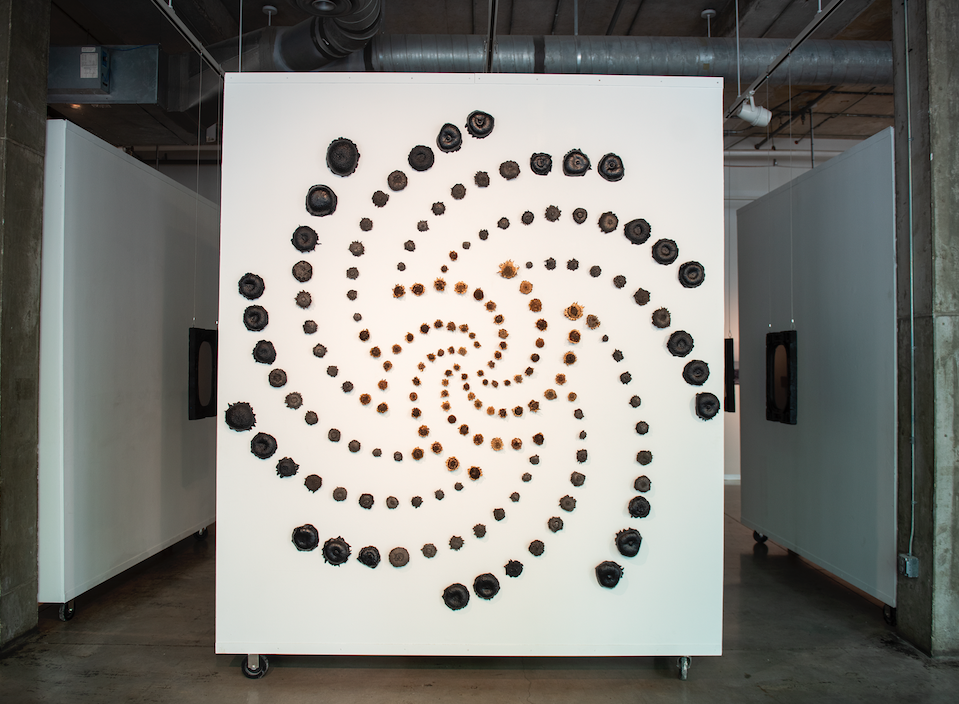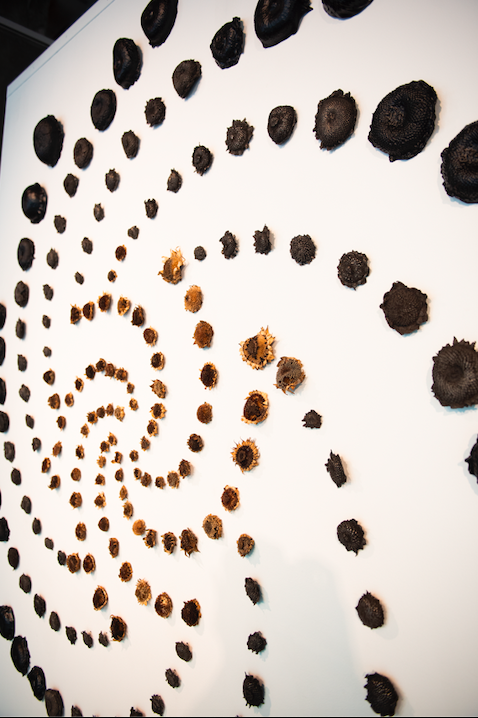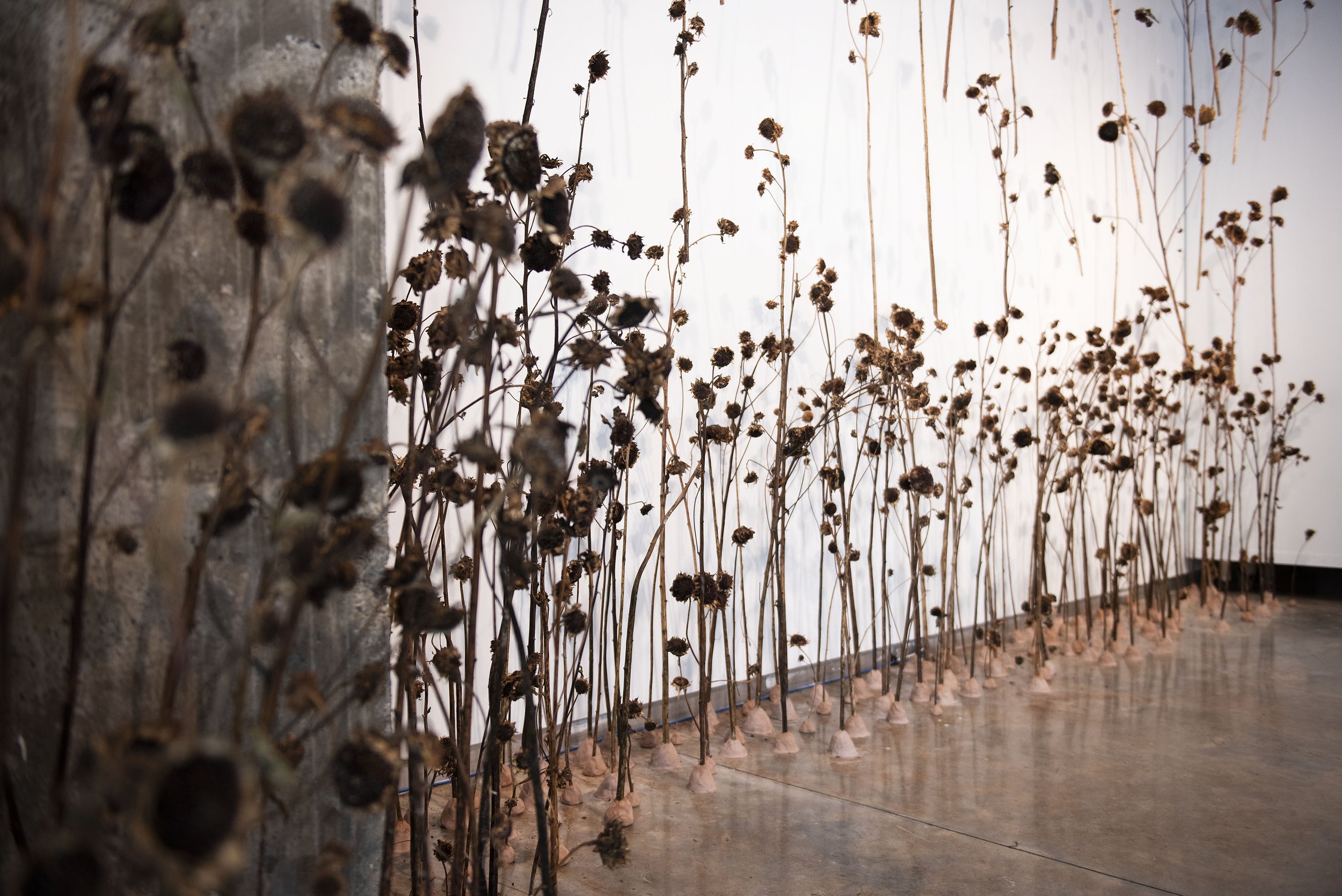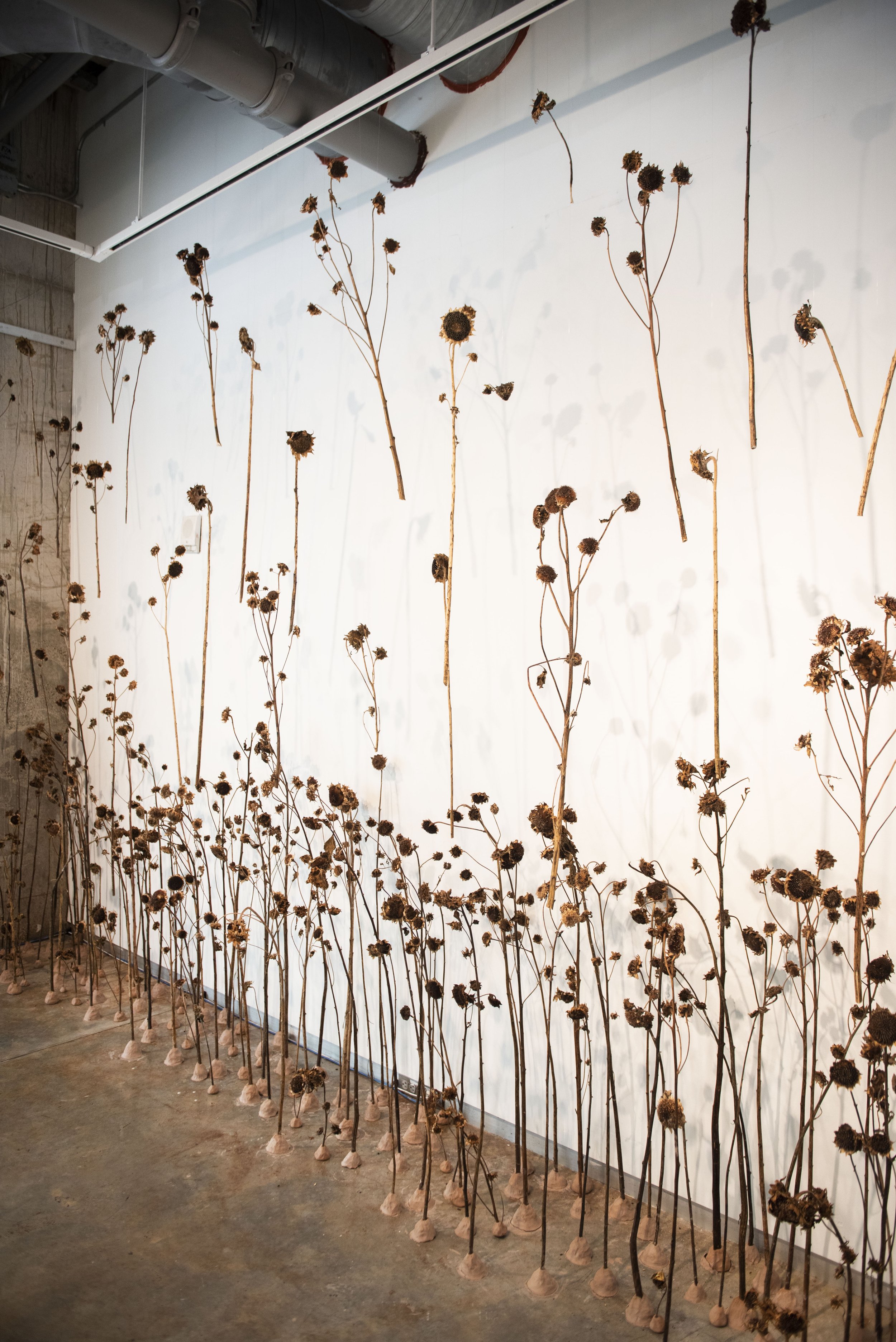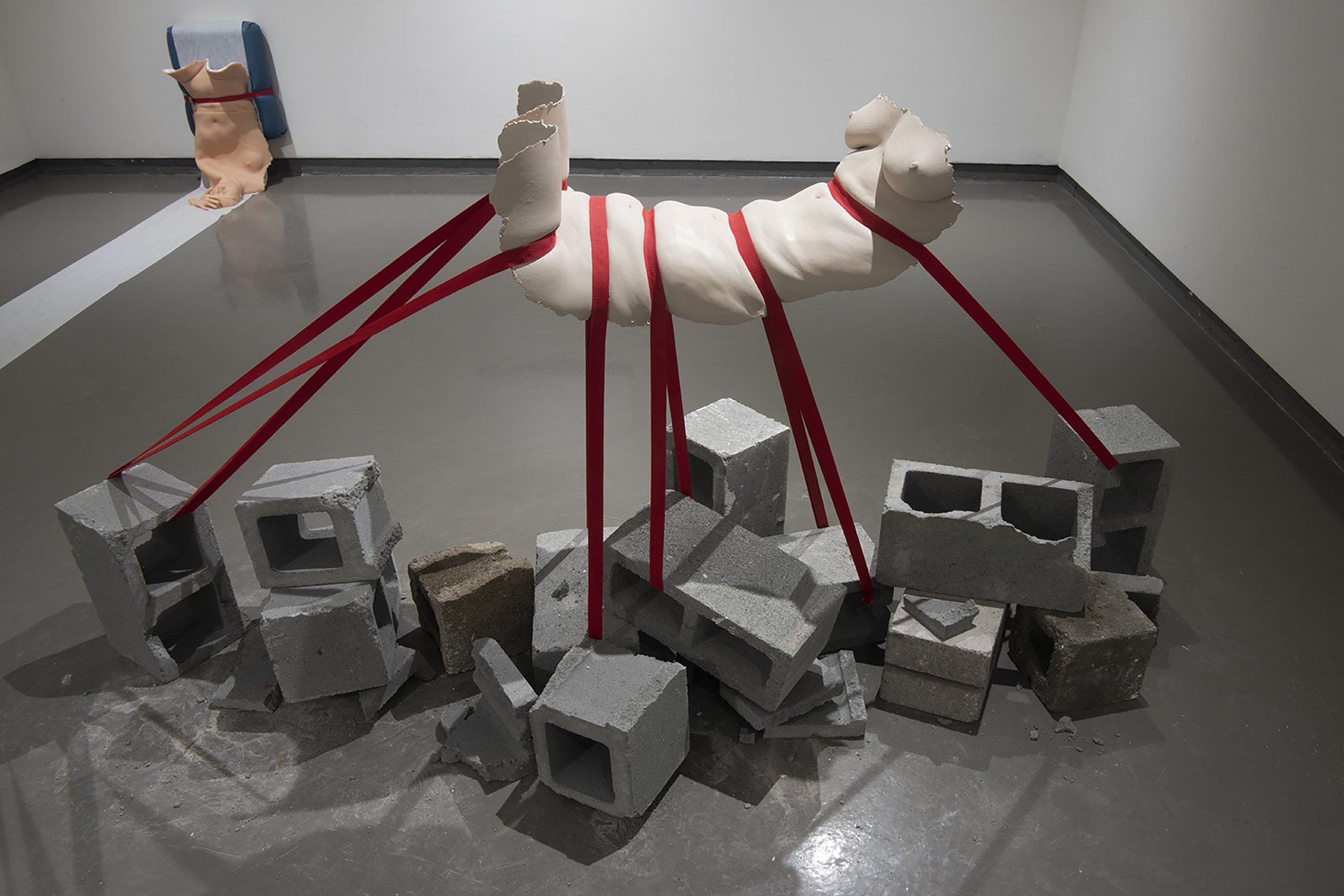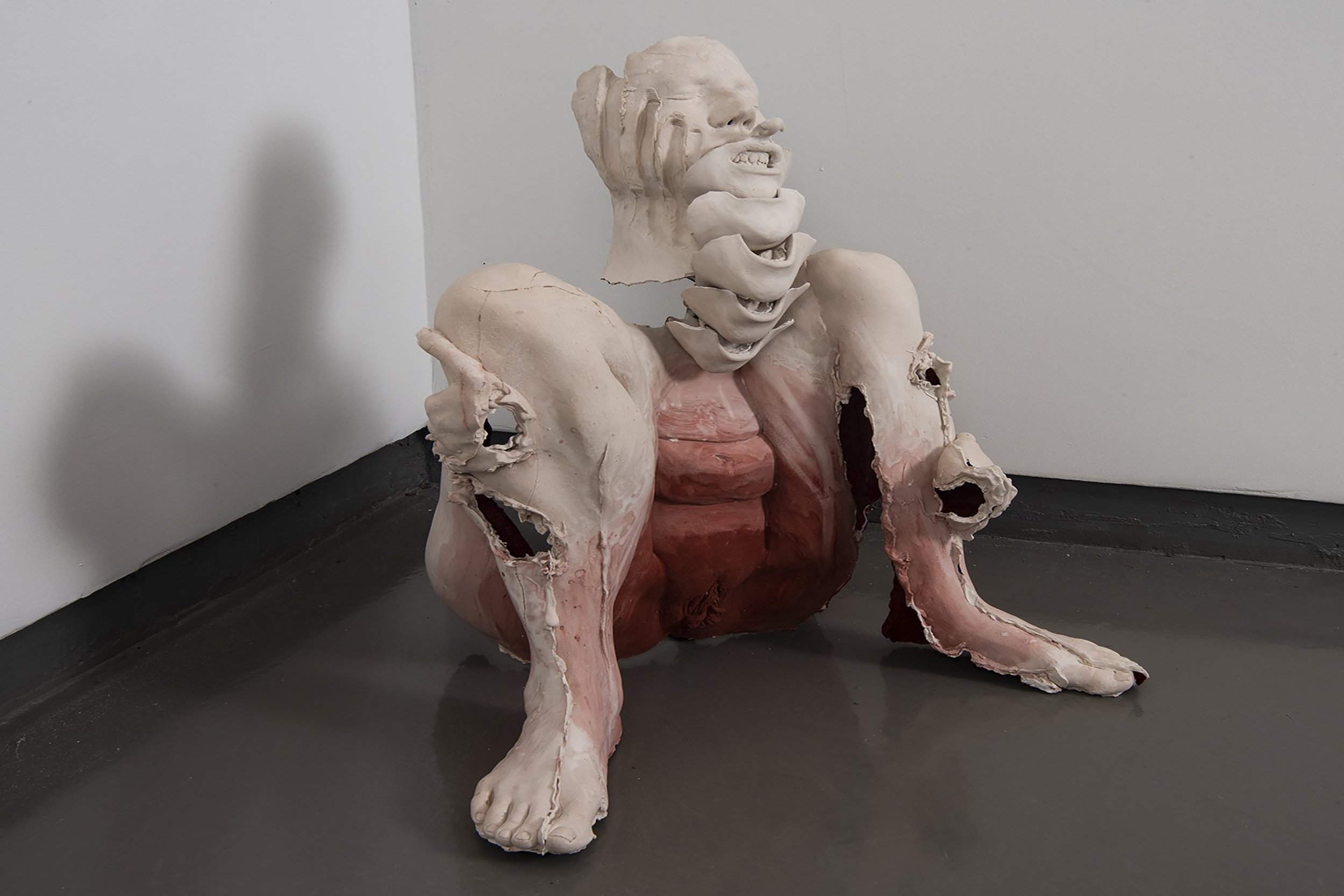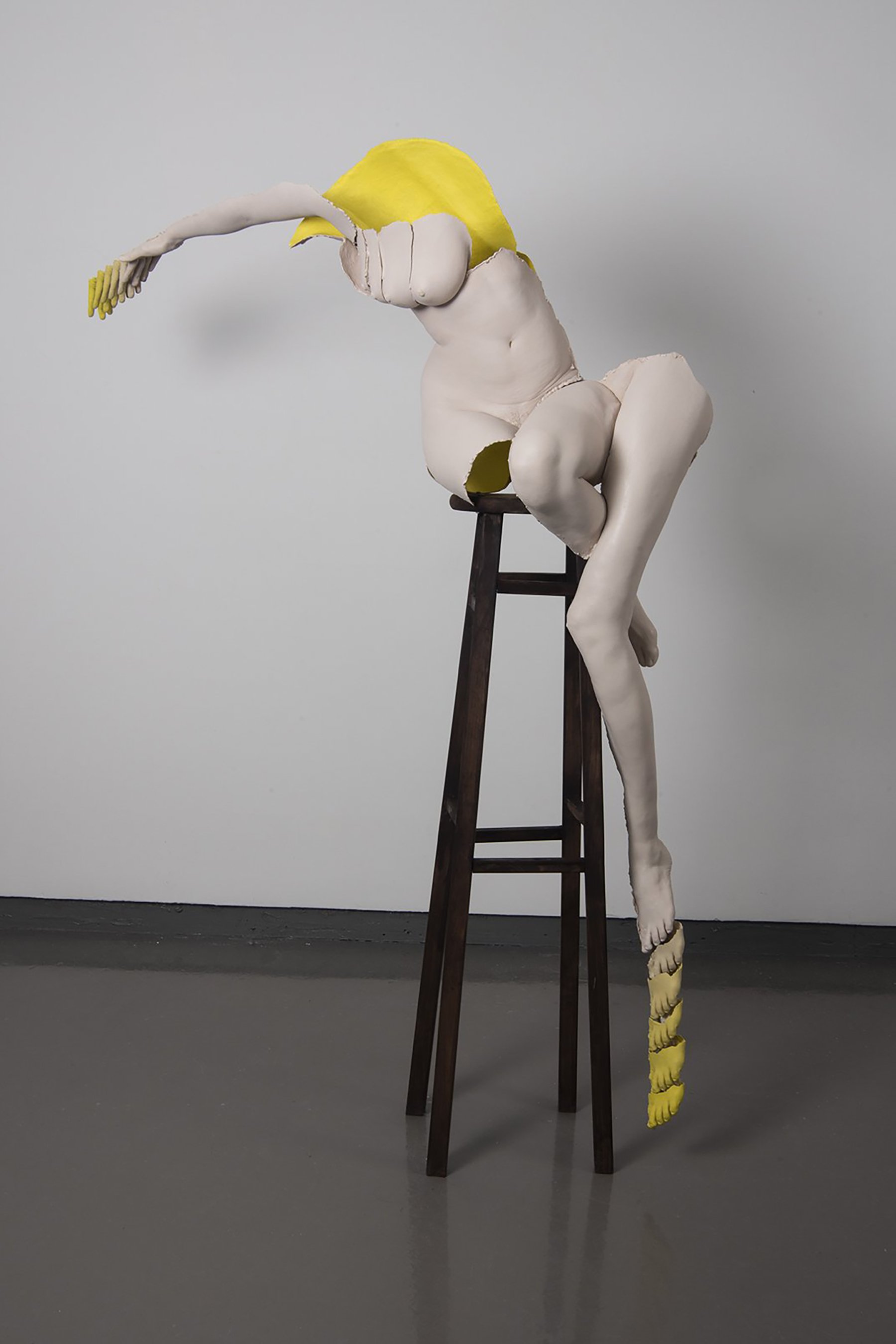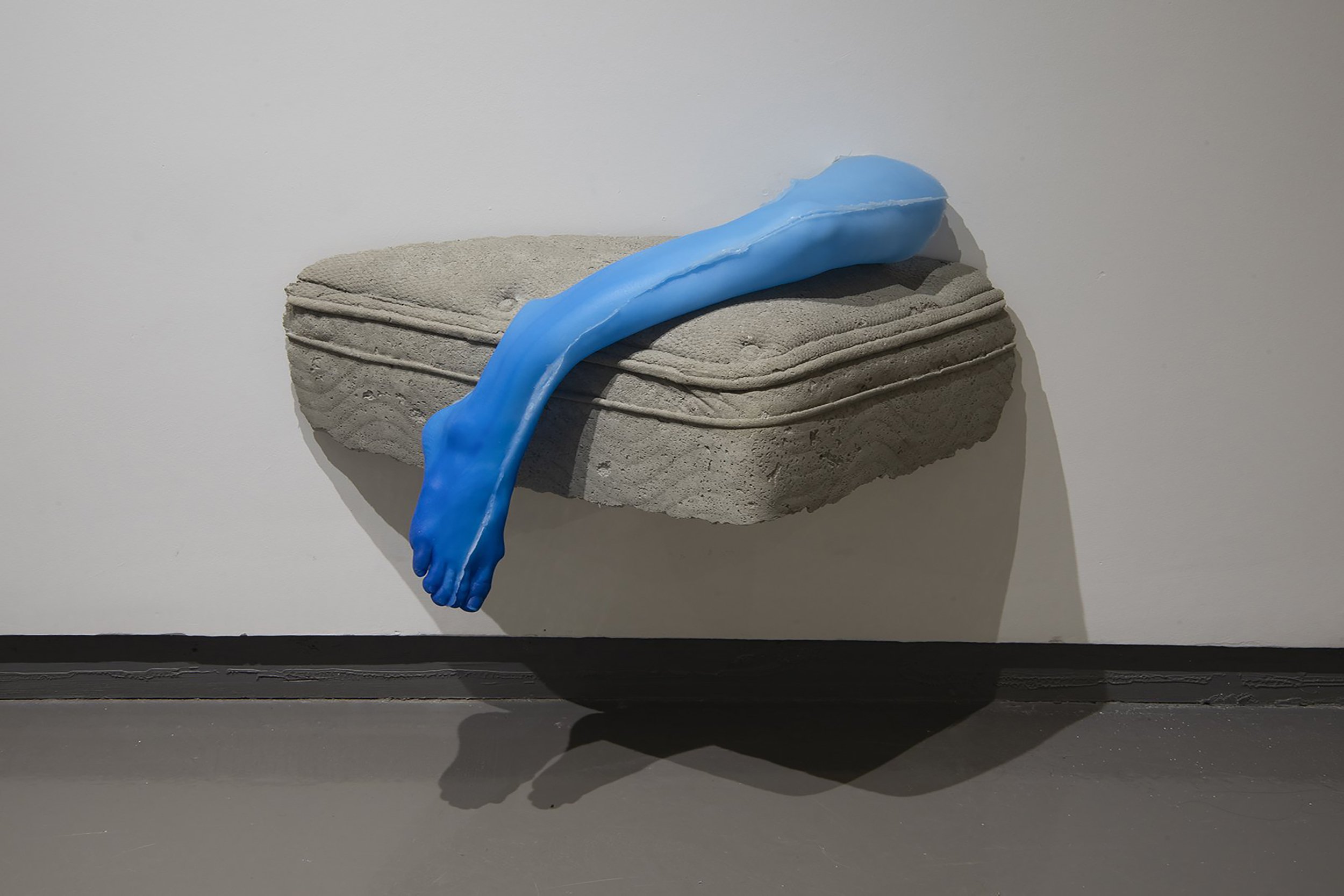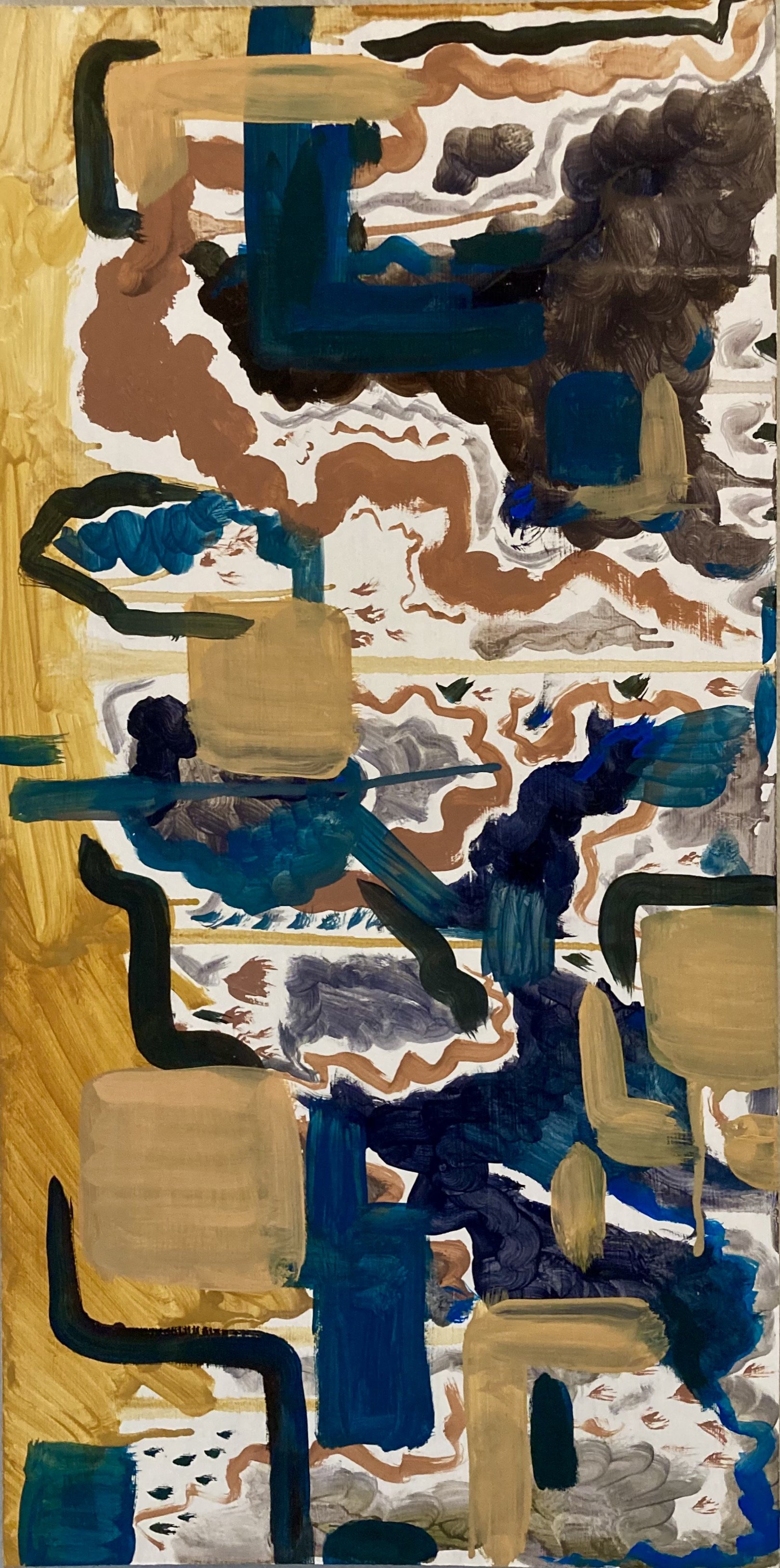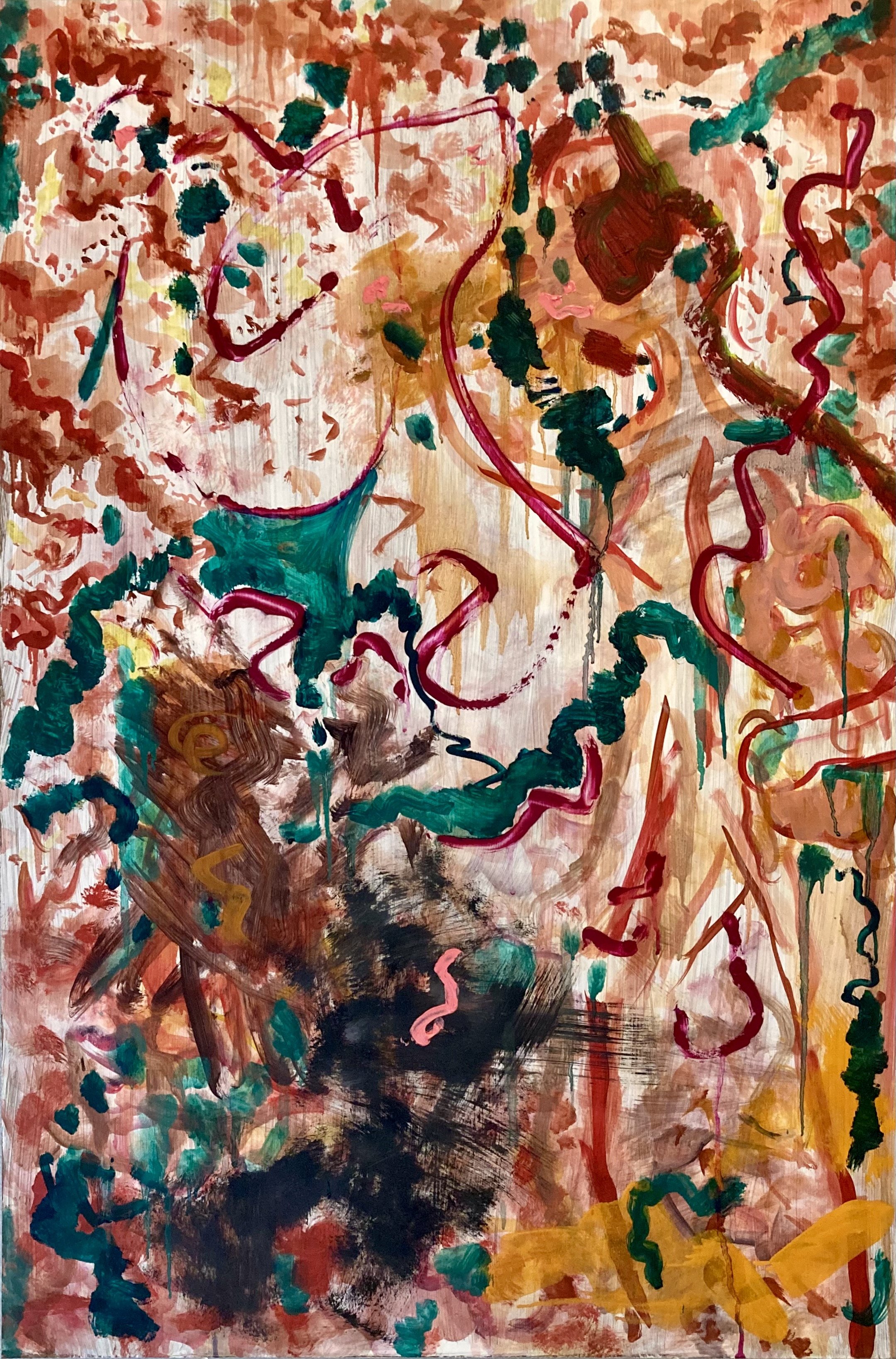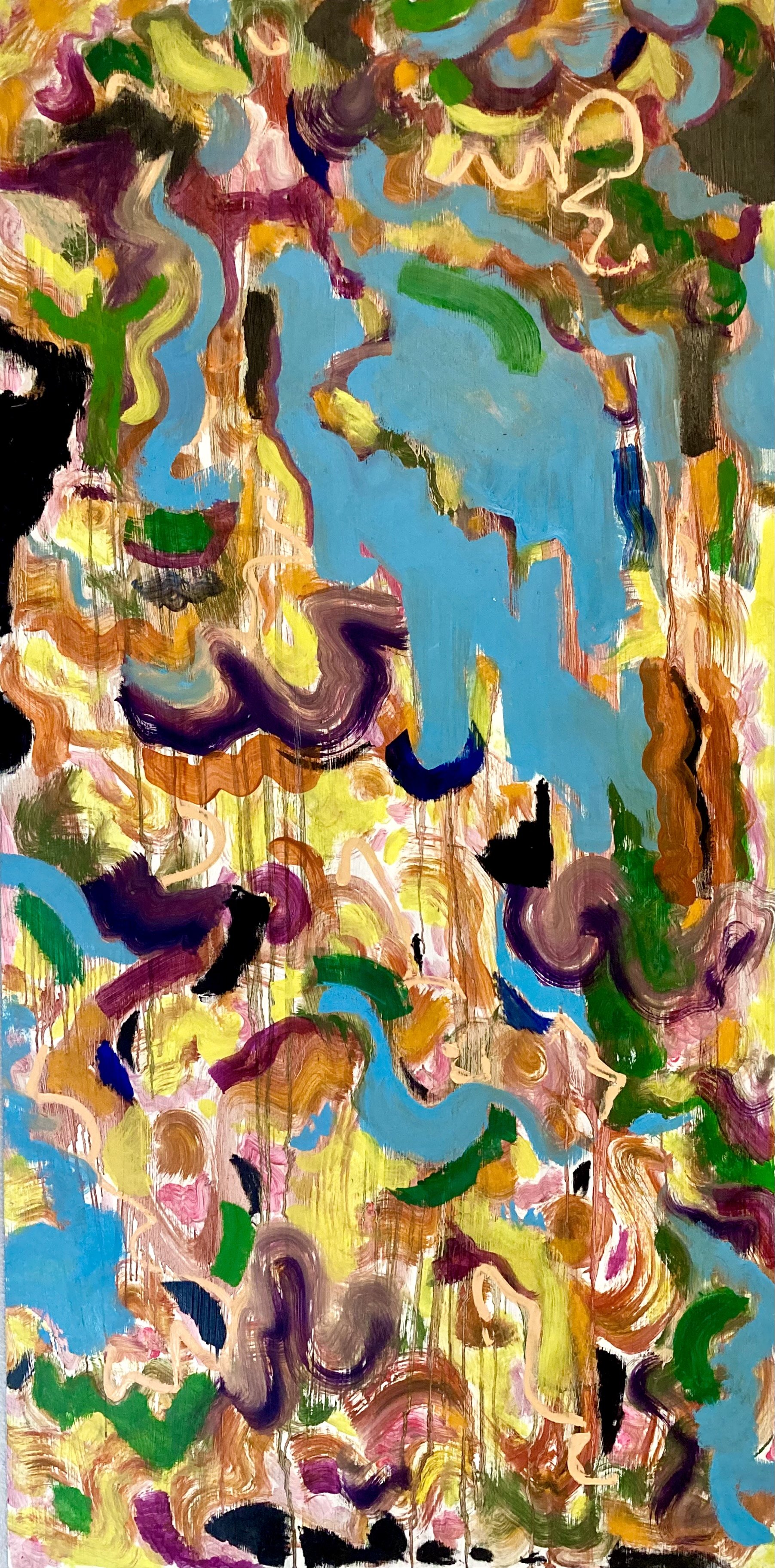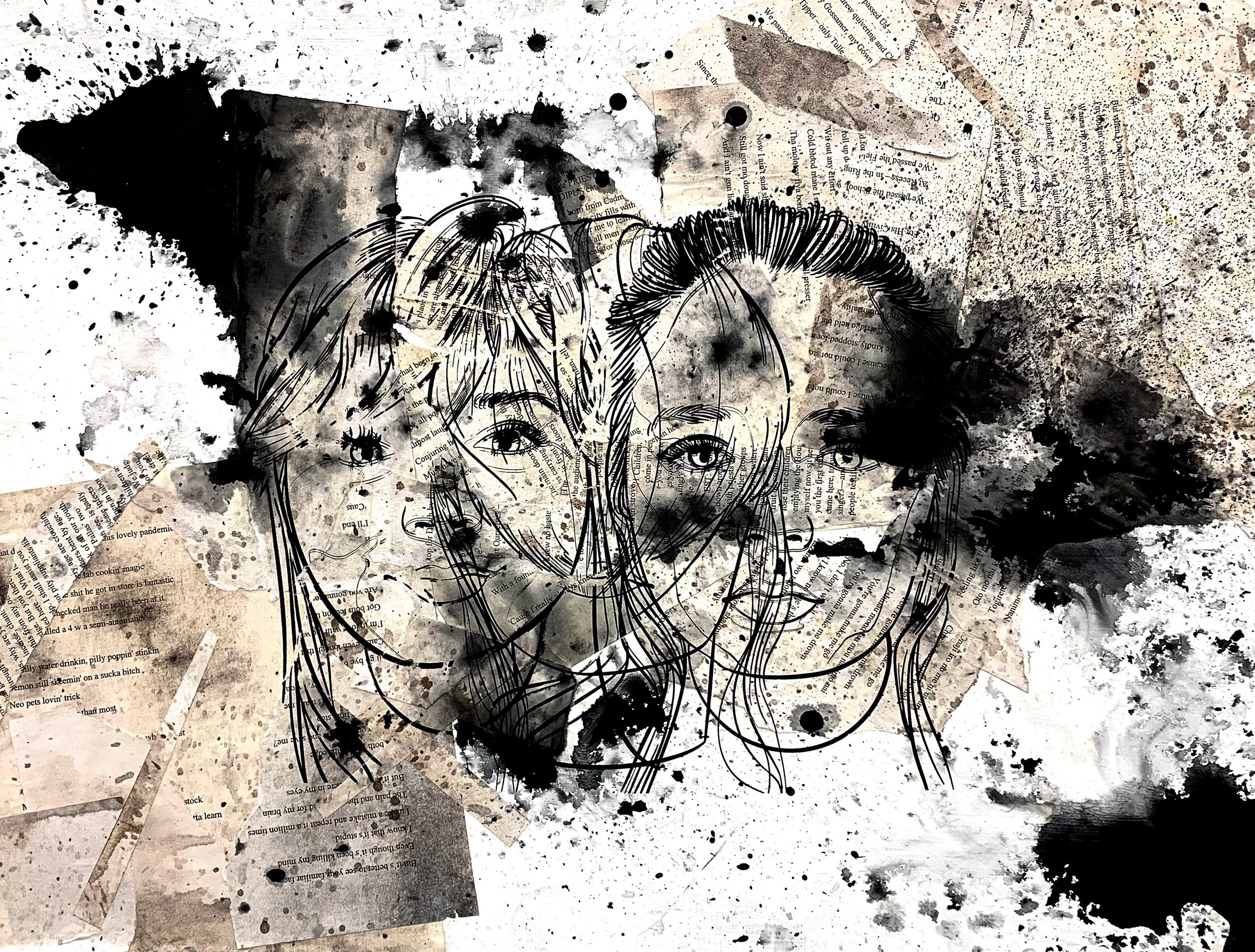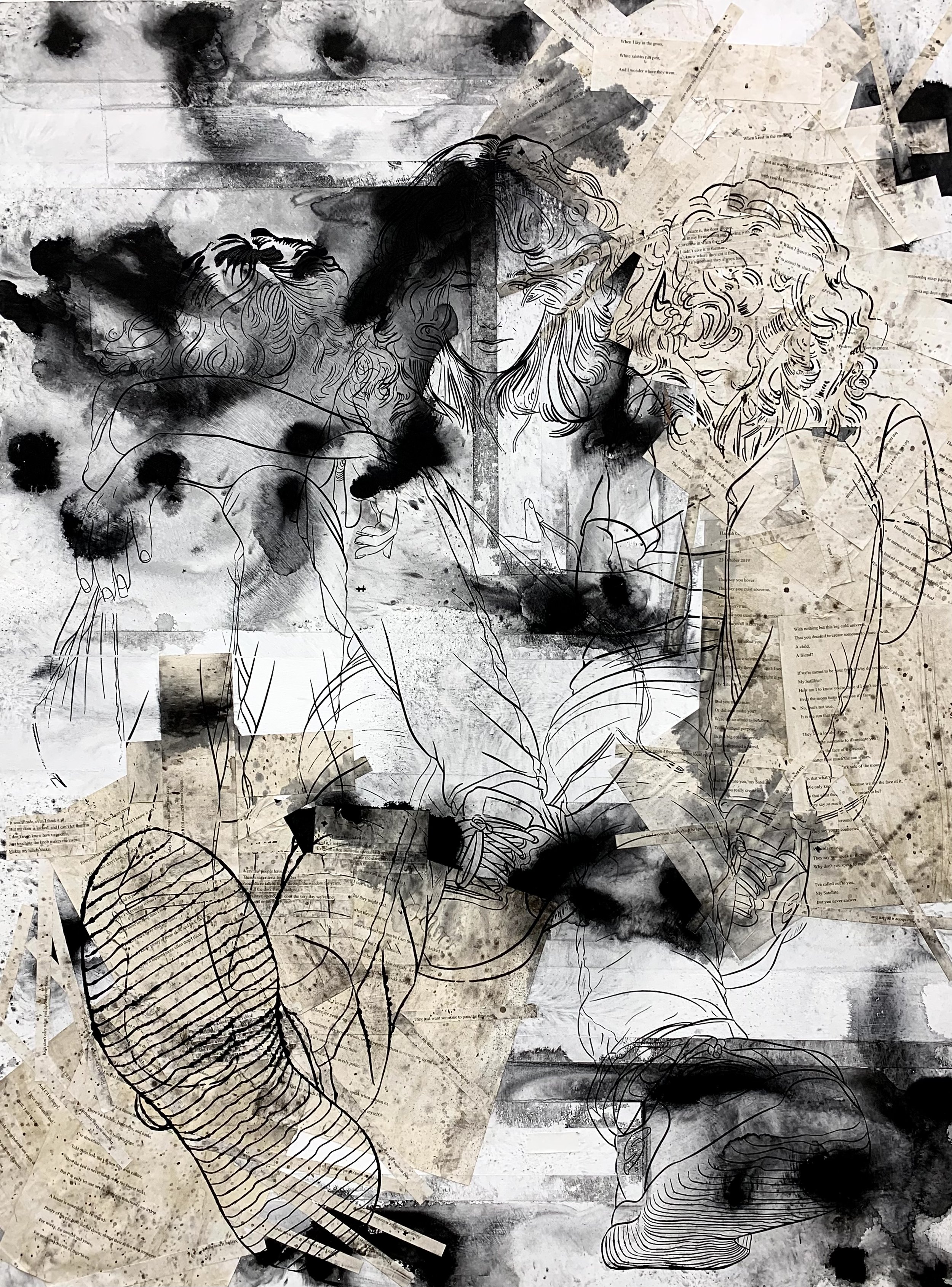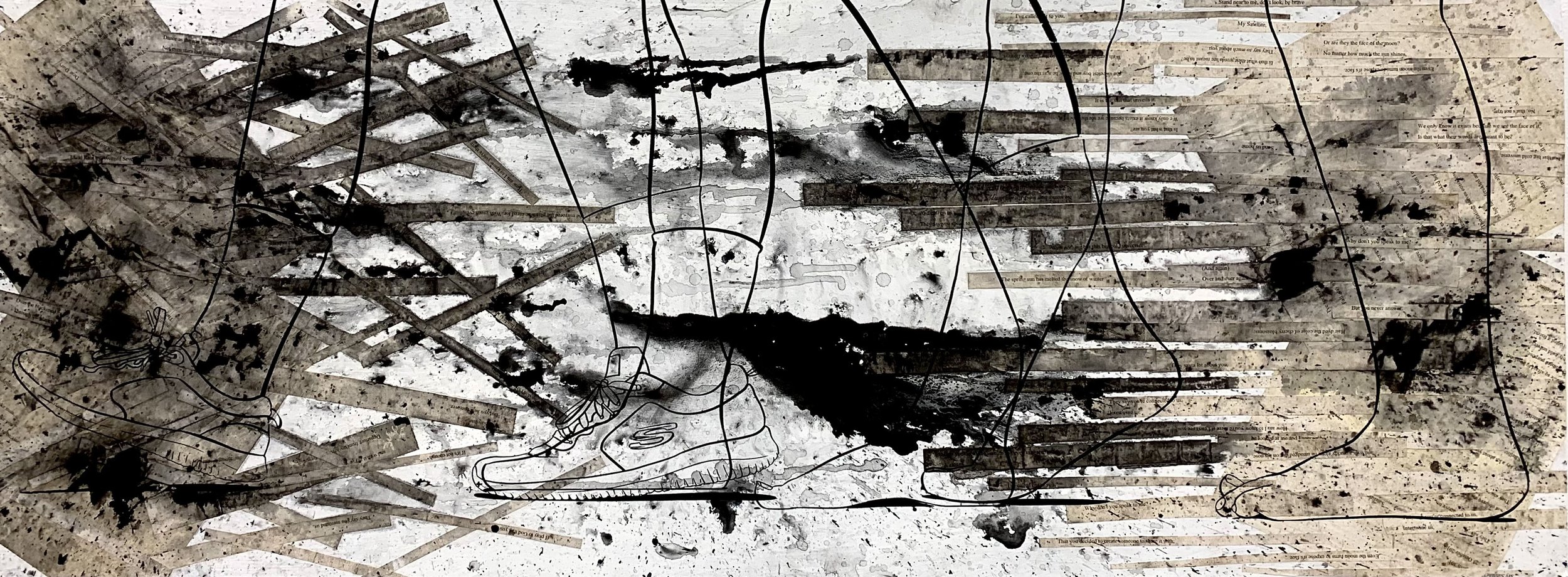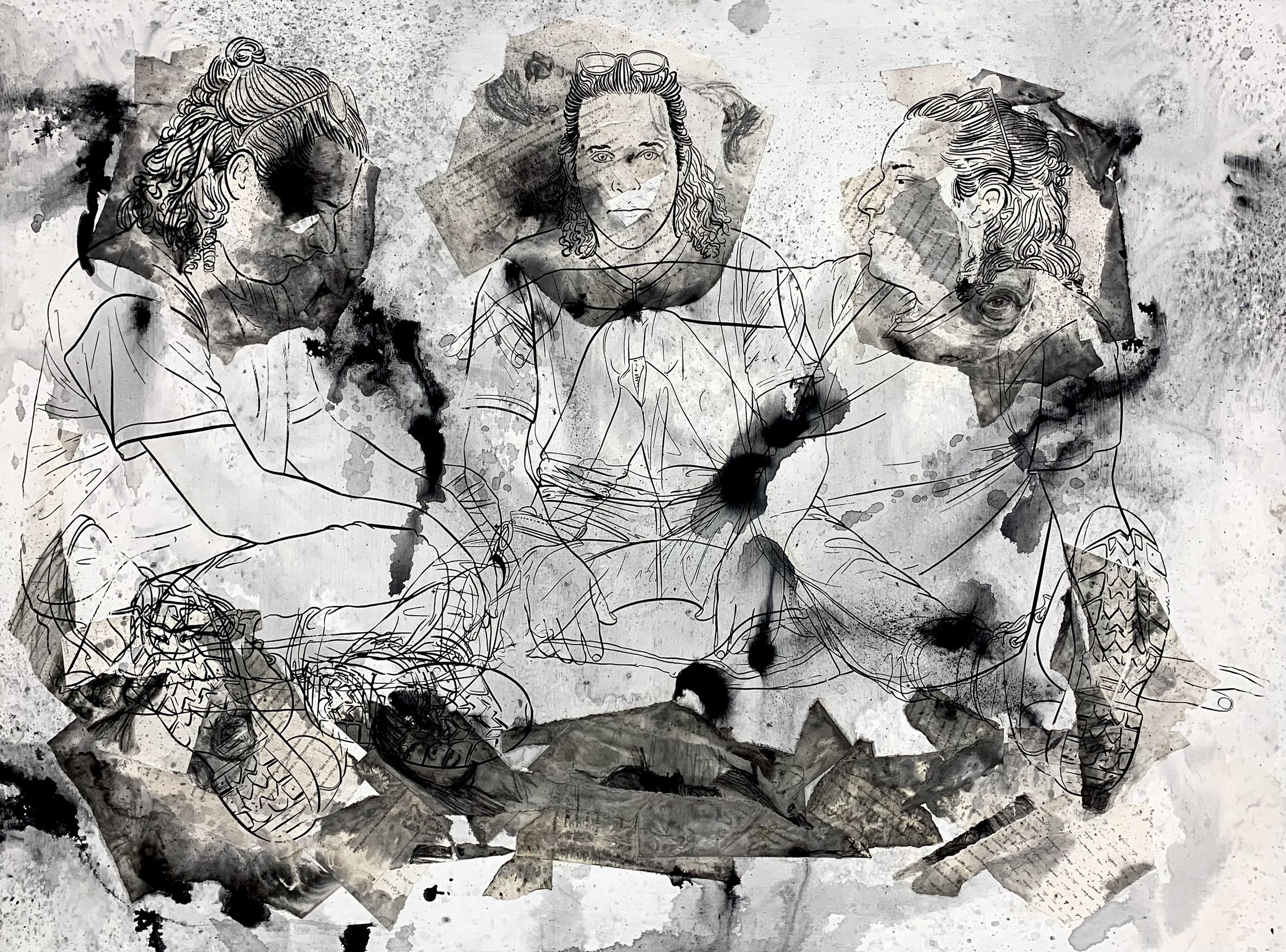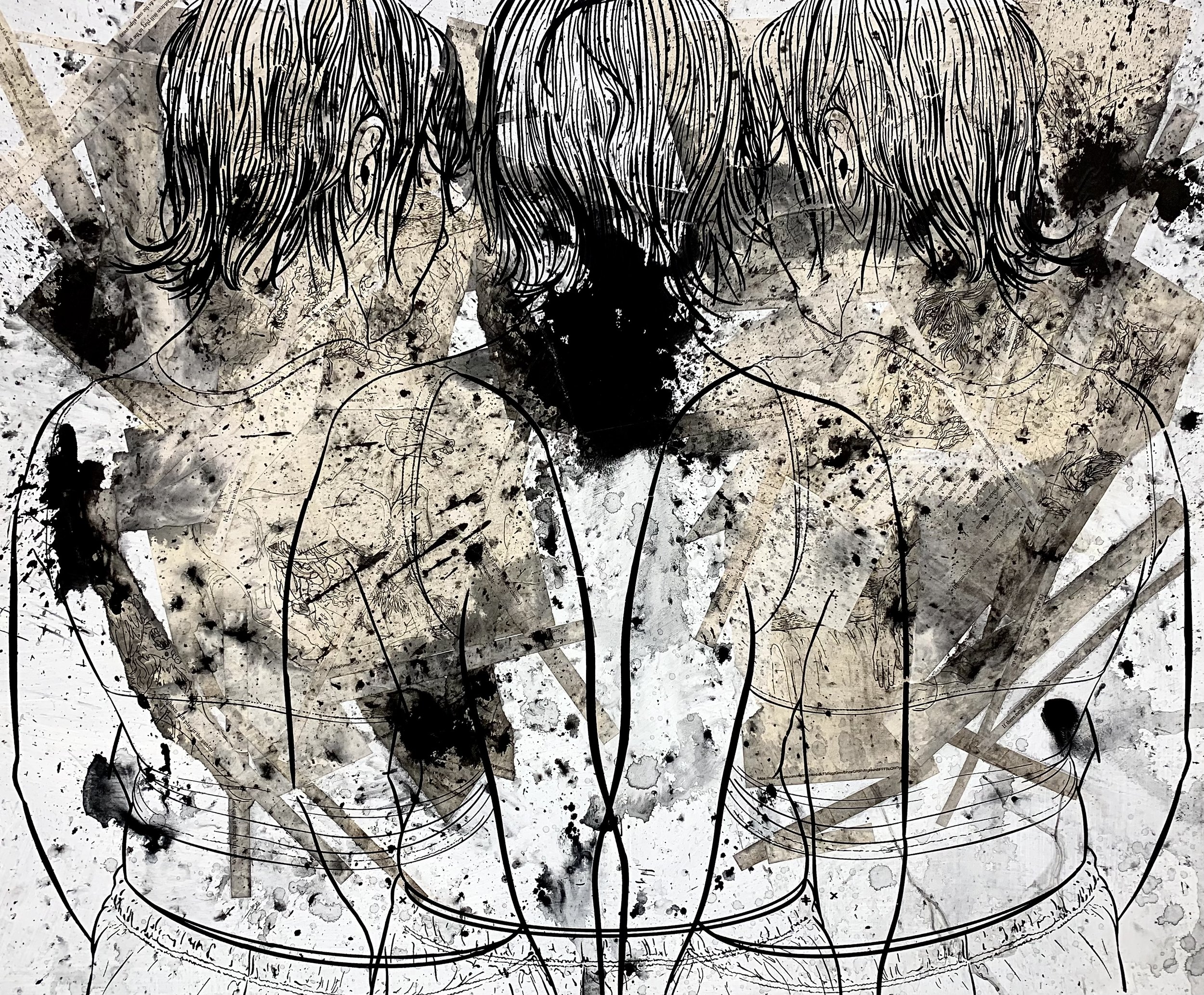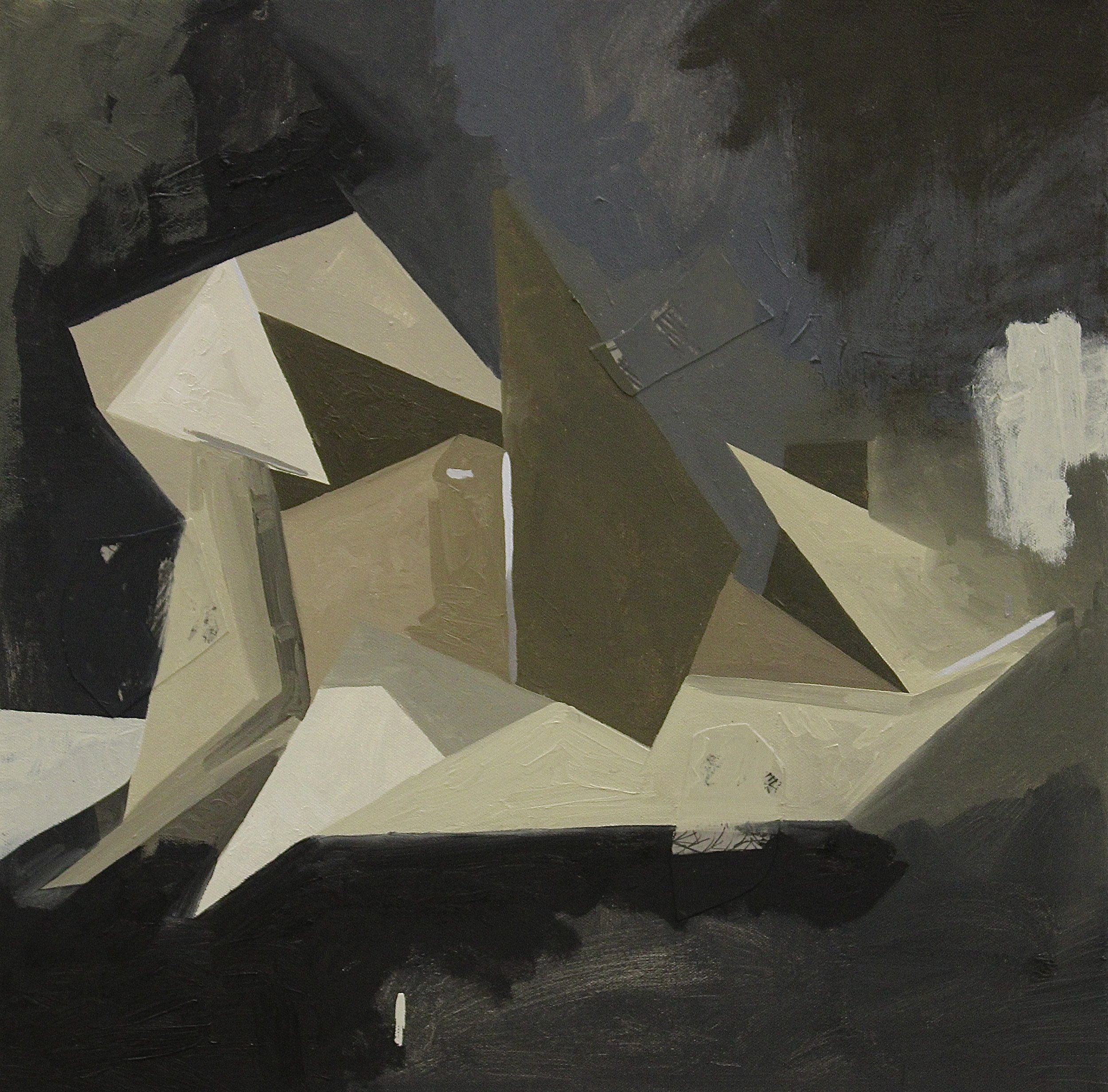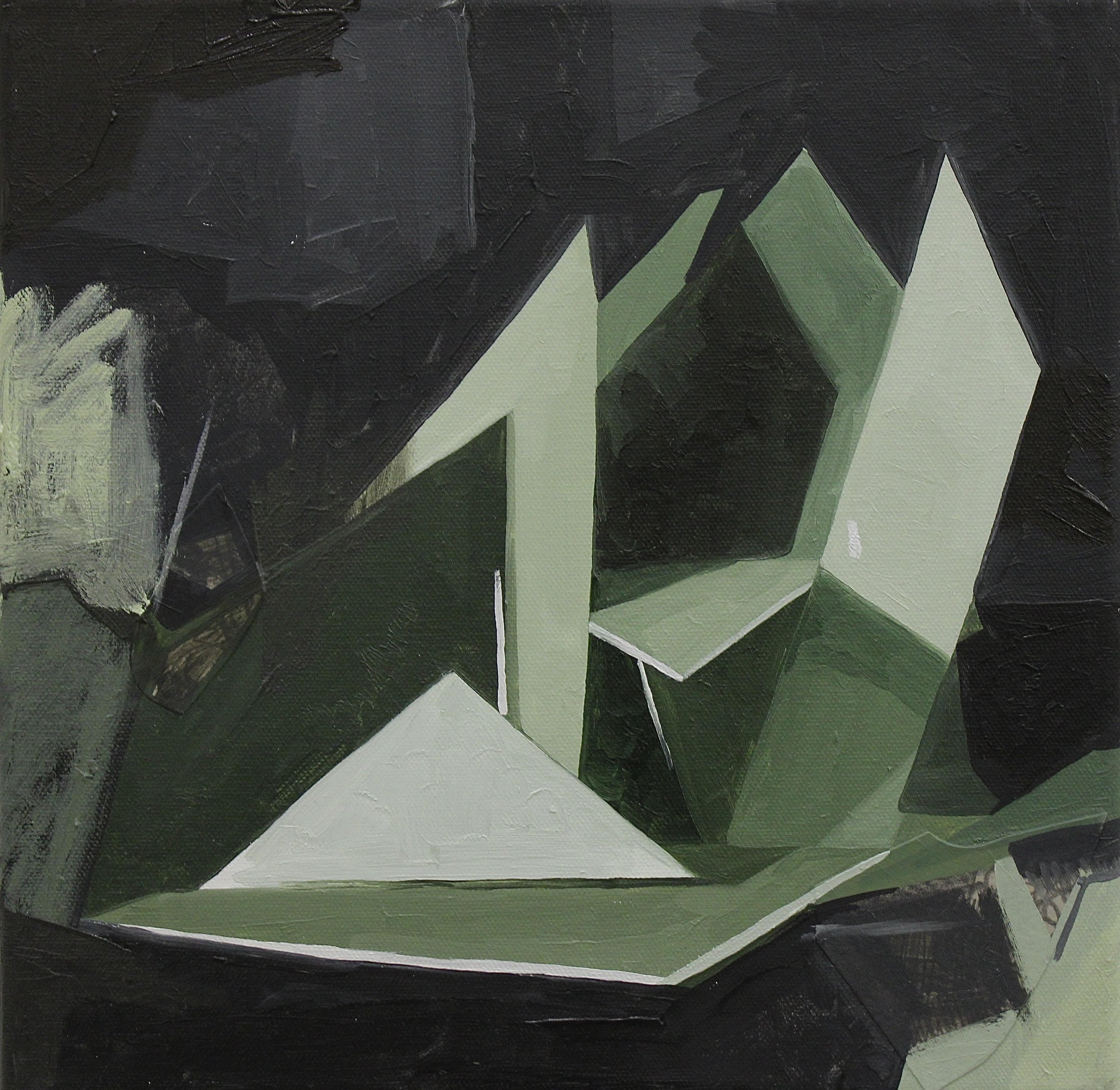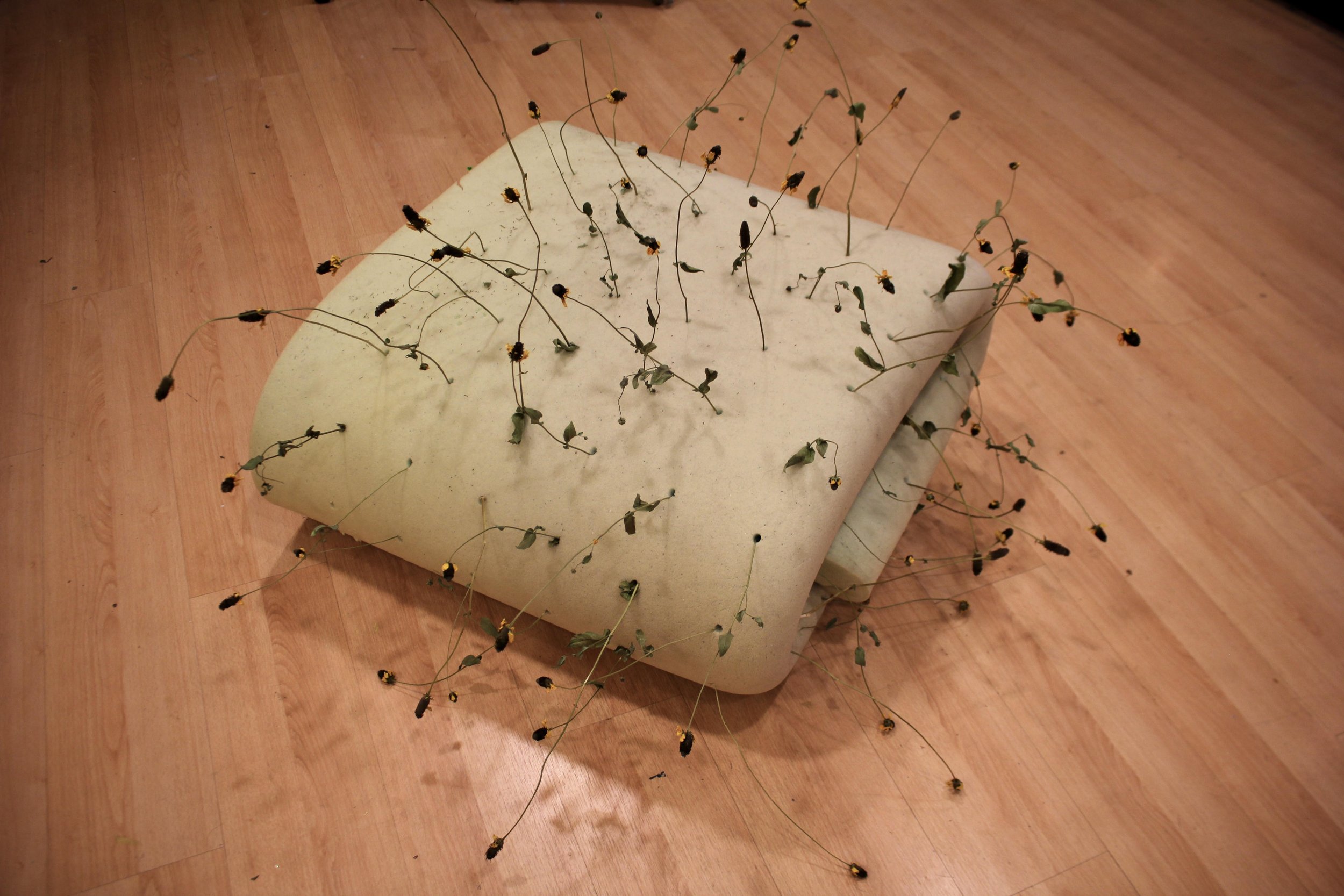June 11 - July 3, 2022
Opening reception Second Saturday, June 11, 6-10pm.
Gallery hours are Saturdays and Sundays, 12-5pm.
Be sure to check out The St. Claude Art Rag for more info on the Second Saturday Art Openings on St. Claude!
Programing This MontH:
Join us outdoors on June 10th to celebrate the Spring 2022 issue of TILTED HOUSE REVIEW. This is a mammoth collaboration that deserves its own evening of attention! Current and past contributors will be reading their work. It’ll be a loose, casual, lamplit evening, and, of course, the brand new REVIEW will be hot off the warm hands that made them--and available for purchase. June 10, 6:30pm at The Front, 4100 St Claude, New Orleans
Rubber Flower is a monthly reading series and open mic presented by Tilted House, a small book press in New Orleans. The series began in 2017 as a bridge between poetry circles. We welcome everyone to share their work! Poetry is our primary focus, but our open mic segment is also open to musicians and other storytellers. Please come early to sign up, as there is limited space. We also provide a space for anyone who wants to sell their books, zines, broadsides, etc., regardless of whether or not you’re reading. For our June reading, we're mighty happy to introduce our featured readers, fahima ife and Andy Young!
Tuesday, June 21, 6:30pm at The Front, 4100 St Claude Ave, New Orleans.
Room 1
Gillian Harper, Legacies of exploitation, dried sunflowers, cast iron, polypropylene plastic, nails, DIMENSIONS 96 x 96 x 5 inches), 2022.
Legacies of Exploitation
Gillian Harper
Legacies of Exploitation is a visual representation of how industry has evolved by means of ‘progress’. The spiral arrangement, referred to as the Fibonacci sequence in mathematics, is an allusion to the seed pattern found in sunflowers.
The natural, dried sunflowers in the center represent the exploitation of natural materials. These lead into cast iron sunflowers that represent the Industrial Revolution and further extraction and refining of natural materials. The flowers at the end of each spiral were created by vacuum forming polypropylene plastic sheets over sunflowers to confront the age of synthetic manufacturing we are currently living in. As this piece developed, I started thinking about the concept of spiraling. Spiraling out of control, spiraling anxiety, the spiral shape of hurricanes that are getting stronger and stronger as the oceans grow warmer.
Gillian Harper is an artist, educator, and environmental advocate from northeast Florida. She is currently based in Baton Rouge, Louisiana where she attended LSU to achieve her Master of Fine Arts. Her artwork explores the relationship between landscape, people, systems of industry and their structures.
Room 2
Bethany Grabert, weighted, cinder blocks, mylon straps, Aqua Resin & and the artist´s pubic hair, 2022.
Bethany grabert, agony, aqua resin & steel, 2022
Bethany Grabert, Lost control, stool, aqua resin and steel, 2022
Bethany grabert, tramadol, silicone & concrete, 2022
Unseen
Bethany Grabert
In Unseen, I explore the multitude of physical reactions and emotions that result when a body lives in pain. I draw my inspiration from my own chronic disease, endometriosis, and from all the people who are stigmatized for living with invisible chronic pain conditions. My work shows the invisible interior experience of extreme pain that can isolate a person from the world and leave them feeling disconnected from their own physical body.
I am inspired by the duality of my own experiences in the home and outside of it. My home has been a place where I have found comfort in putting down my performance of appearing well. Often in social settings or in the presence of a doctor it is fundamental to act accordingly, to avoid social and medical ostracization. To be taken seriously when you have a condition that carries stigma is to choose what parts of you to allow other people to see. My work shows the anger felt when I have experienced isolation due to unrelatability to others and neglect from doctors due to stigma around medical treatment and lack of research on issues relating directly to people who are born with a uterus. My work shows the constant state of fatigue making it hard to perform simple everyday tasks and the destabilizing effect of your body failing you.
I have spent time with other people who have experienced similar health problems as I have, and made life casts of their body, combining many parts from many people to allude to the communal problem of stigma placed upon people who live with invisible pain. I augment the human forms by combining multiple fragmented life cast parts, gesturally sculpted parts, housing construction materials, and significant objects related to environments which the chronically ill spend an extended period of their time in. The distorted parts of the body are important because by exaggerating the augmentation of the exterior of the body, it expresses the interior feelings. These three-dimensional assemblages visualize the physical remnants of pain and trauma and speak to the specificity of the performance of wellness demanded by the status quo. My intent is to help the general public understand what it feels like to live with chronic pain, by interrupting their natural relations of the human form by exemplifying the internal struggle on the surface of the body.
Growing up in South Louisiana, Bethany Grabert began studying art at a young age with a local cajun painter. She always found solace in creating something with her hands and art has been her one constant throughout her life. Prior to pursuing her graduate degree at Georgia State University, She received a BFA with a focus in ceramic sculpture, at Nicholls State University. She is influenced by both her personal experiences and the sociopolitical history of identity, religion, domestic spaces, abuse, and reproductive health. Her artwork has been exhibited in cities across the United States including New Orleans, New York City, Rochester, Minneapolis, Atlanta and Tampa.
Room 3
Karianne Henkel, Pinch, Oil on masonite 24” x 12” 2022
Karianne Henkel, Prod, Oil on masonite, 36” x 24” 2022
Karianne Henkel, Poke, Oil on masonite 47” x 24” 2022
Sabrina Gil, Painter of the Knight, Acrylic ink and stained paper on masonite panel, 24” x 18”, 2022
Sabrina Gil, A Writer’s Complex, Acrylic ink and stained paper on masonite panel, 36” x 48”, 2022
Sabrina Gil, Growing Pains, Acrylic ink and stained paper on masonite panel, 48” x 18”, 2022
Sabrina Gil, The Hart of Mann, Acrylic ink and stained paper on masonite panel, 48” x 36”, 2022
Sabrina Gil, Raijin, Acrylic ink and stained paper on masonite panel, 36” x 30”, 2022
Bailey Weiss, Dunes 1, Oil on Canvas, 20inx20in, 2022
Bailey Weiss, Dunes 2, Oil on Canvas, 20inx20in, 2022
Bailey Weiss, Forest 1, Oil on Canvas, 14inx14in, 2022
Bailey Weiss, Forest 2, Oil on Canvas, 14inx145in 2022
Under-Thoughts
Sabrina Gil
Karianne Henkel
Bailey Weiss
Under-Thoughts is a humorous alternative to the commonplace idea of the subconscious, flow state, subliminal mindset often referred to in painting. This lighthearted exhibition proposal features 3 female artists with whom all use varying substrates and mediums. Although all 3 are very different, the pieces all convey a similar idea: the concept that is drawn out of process. The pieces by these artists allow the audience to be welcomed into a painted world, move around and experience the mark making and various mediums, and then leave with a new understanding of the work. These 3 artists working together will connect to be able to display what it looks like to be able to paint your “under-thoughts” and see what they appear conceptually as once they are finished. Conceptual ideas displayed in the pieces follow themes based in relationships with oneself, friends, family, or nature.
Sabrina Gil is an oil painter and screen printer from Covington, Louisiana. She received her Bachelors of Art with a Concentration in Painting at Southeastern Louisiana University. Using thick layers of paint with a palette knife and printed linework, she develops near life-size figurative works of art. In these scenes, Gil seeks to push the bounds between 2D and 3D as she explores what lies beneath the surface of her model's physical form. In her most recent body of work, Sabrina Gil seeks to explore how people cope with their emotions and trauma. In it she steps away from painting and takes up a multimedia process which includes collage and screen printing. Gil uses screen printing to create offset “versions” of her models which expose what lies beneath their calm façade. These doppelgangers then sit atop a collage of various artifacts and textiles that hold hidden secrets about the models.
Karianne Henkel is a Louisiana native oil painter, raised homeschooled in a rural small town. Henkel is a recent graduate of Southeastern Louisiana University, earning their bachelors degree of Art in Art, with a concentration in Painting. Their current focus is utilizing expressionist mark-making and creating colorful abstract compositions that convey emotion. Karianne works intuitively by allowing the subconscious to lead, engaging emotion through movement, and holding space for formal decisions within the raw expression. Karianne’s paintings have been shown at the Contemporary Art Gallery at Southeastern Louisiana University in the 2020 Juried Student Exhibition, 2022 Juried Student Exhibition, and Spring 2022 Senior Exhibition.
Bailey Weiss is a 23 year old artist from Baton Rouge, Louisiana. Weiss graduated with her Bachelors of Art from Southeastern Louisiana University in the spring semester of 2022. She will be attending the University of North Texas in the fall semester of 2022 for her Masters of Fine Art. Weiss' specializes in oil paintings on canvas which typically include mixed media. Her most recent series titled "Mind's Eye" depicts geometric, dreamlike landscapes. Weiss' depicts what objects look like within our internal mind through blurred borders, muddied background, and muted color palettes. Her process includes painting a geometric form from life then from memory. These geometric forms can be seen bridging 2D and 3D.
Sabrina Gil
@painteroftheknight
Karianne Henkel
www.kariannehenkel.wixsite.com/website
@k_reate
Bailey Weiss
@bmwpaintings
room 4
Carson Smith, "I think I'm lost dude," 2021, pastel on paper
Rosalie Smith, "Flower bed," 2022, black eyed susans and foam mattress topper
Monsters and Monstrosities
The Smiths (Rosalie and her brother Carson)
In the waiting room for the dentist my mother would give my brother her sketchbook and ask her to draw a comic for her. They often included monsters, ninjas, or mechanics with gold teeth. I have a tattoo of the moon in one strip tattooed on my wrist. In the last months before my brother got sober, he began compulsively making monster drawings like the ones on view today. I found them greatly disturbing. In the months after he gave a few to me, I began drawing something similar in my notebook, red hands. Hands, reaching from the earth to capture houses on hills, uncontrollable inexplicable forces.
This show is about influence, this is about family. This is about who we deeply learn from as artists.
Carson Smith (b. 1995 Blacksburg, VA) is an artist and chef. He is influenced by comics, abstract expressionism, and animation. He has not received formal training, he draws because that is what his mother encouraged him to do when he was bored as a child. His work at times channels the struggle of addiction, relationships, and grief.
Rosalie Smith (b. 1993 Blacksburg, VA) is an emerging interdisciplinary artist based in New Orleans, LA. In July 2017, she quit her job as a grant writer at the Contemporary Arts Center, New Orleans. Their mother was dying of cancer, and needed a caregiver. At this time she had produced little artwork since graduating from Smith College in 2015, and began devoting days to the studio. In the process of losing their mother, they developed a sensitivity to the tenuousness of life that became the lens through which they saw the world. At this time they began making material and formal choices informed by a newfound awareness of impermanence and grief, composed as lingual building blocks satisfying their interest in poetry
Smith collects objects that speak to grief and attachment. In manipulating the detritus, Smith explores humanity's futile attempts to control our environment in the face of ephemeral truth. Smith is drawn to natural erosion of the built environment, the illusion of permanence, and the inevitability of loss.
